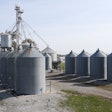
More than 90 percent of the corn, soy, canola and cottonseed grown in the United States is genetically engineered (GE), with a small amount of acreage for organically grown crops. The benefits and premiums for growers to invest in GE crops outweigh the investment in organic crops — something that could change as regulations become more stringent, or consumer demand for organic food increases.
University of California–Davis biotechnology specialist Alison Van Eenennaam says that because there is a limited supply of organic field crops such as soy, the United States is increasingly importing organic soy and other products from countries with inexpensive labor like China and India.
As of now, demand for GE crops is strong, as are the regulations and import barriers for GE crops. However, new varieties are taking longer to approve in the United States and regulatory approvals are difficult to synchronize with import countries. Despite the grain industry’s best efforts, it runs the risk of shipping grains to an import country only to have it rejected because it has yet to be approved in that specific country.
Unpredictable regulations
“The lack of predictability in regulatory decision making in the United States and abroad is negatively impacting innovation and investment in agriculture productivity and competiveness,” says Cathy Enright, executive vice president of the biotechnology industry organization food and agriculture.
“By law the USDA is supposed to make an approval decision within 180 days, but right now the average length of time is 900 days.” Meanwhile, there are other varieties being engineered in Argentina, Brazil and China.
The high cost of regulation is expensive for the development of small-acreage varieties, especially those produced by academic institutions and land-grant universities.
“There have been a lot of smaller crops that have modified for traits that would be of consumer benefit, but the developers, typically academic researchers, do not have the millions of dollars it takes to get these products through the regulatory process,” says Van Eenennaam. She points out that while virus-resistant papaya in Hawaii saved the industry, there haven’t been too many more GE consumer-interest crops because of difficult and costly regulations.
The majority of GE crops are large acreage grains that have companies paying for the regulatory approval. Previous biotechnology work focused on the input traits that affect a plant’s resistance to drought and pests. More interest is now on genetically engineering the output traits in crops, such as crops with altered nutrient and vitamin composition, as well as livestock digestibility. The interest and ability in the United States exists to continue to modify crops for livestock digestibility — such as decreasing the amount of lignin in alfalfa — but, varieties are taking longer to get through regulations.
Consumer uncertainty
Consumer fear of GE food is challenging the 18 million farmers globally that grow GE crops.
“One of the issues facing biotechnology is misinformation perpetuated online and across social media that is causing consumers to worry needlessly, and undermining their confidence in the safety of the U.S. food supply,” says Enright.
Information such as the controversial Séralini study that gained global attention worldwide in 2012 has helped to fuel consumer fear. The study, “Long-term Toxicity of a Roundup Herbicide and a Roundup-tolerant Genetically Modified Maize,” claimed that Roundup Ready corn causes cancer in rats. The study was criticized by scientists in the European Food Safety Authority (EFSA), as well as authorities in Belgium, Brazil, Romania, France, the Netherlands, Germany and Denmark, and later retracted from the Journal of Food and Chemical Toxicology.
“The number of animals in this controversial and highly-politicized 200 rat study pales in comparison to the field experience with feeding GE crops to livestock,” says Van Eenennaam. “Over 100 billion food animals have consumed GE feed for well over a decade in the U.S., and there have been no deleterious trends in the health and performance of these large commercial livestock populations.”
In response to the fear of GE food, grocers such as Whole Foods have announced that they will label all their food as either GMO or non-GMO by 2018. Other companies such as General Mills have begun restricting GMO ingredients from their foods.
The growing consumer fear has the potential to create a demand for organic crops. “Growers could adapt to grow organic crops if there is a market or a premium available,” says Van Eenennaam.
Import barriers
According to Enright, another challenge that grain handlers and feed mills face is the import barriers that countries set up for political expediency or to manage their supply and demand.
The GE regulations are different in every country, with each having its own approval approach and timeframe. This causes setbacks for the exporter and importer.
Consequently, new varieties of crops are grown, harvested, and exported with the risk of being rejected. For example, in September 2014, Cargill filed a lawsuit against Syngenta Seeds, Inc., seeking damages for marketing Agrispure Viptera MIR 162 corn seed before it was approved by China — a key importer. Cargill shipped vessels with the seed to China, who rejected the shipment.
U.S. grain elevators, growers and exporters may lose up to $3.4 billion during the 2014 to 2015 marketing year due to a launch of a new variety of corn seed that has yet to be approved in import countries, according to an April report by the National Grain and Feed Association.
Van Eenennaam stresses that in a perfect world, there wouldn’t be any new varieties grown until they have been approved by key importers. Still, in some cases the import approvals can take years, she says. For example: “If I have an approved Bt variety and I cross it with another approved variety, then there will be no more risk, because both parents are safe,” says Van Eenennaam. “But the regulations in some importing countries regulate that “stacked” variety as if it were an entirely new entity.” This adds additional years to the regulatory approval timeframe.
There is risk for the importing countries too, especially for those such as Europe that have a slow approval rate. “Europe is very dependent on GE soybeans to feed their livestock,” says Van Eenennaam, “They need to give import approvals to the varieties that are being grown by the countries they are importing from, such as the United States, Argentina and Brazil, or else they will risk having no acceptable soy supply for their livestock herd.” Europe has a zero tolerance for varieties that have not been approved for import making commerce difficult for commonly grown, unapproved varieties.
Currently there are more than 165 varieties that have been approved for importing in the United States and Japan.
Biotech progress rests on non-tech factors
For the past 15 years, biotechnology has dominated the grain industry domestically and globally. While the interest and scientific ability exist to focus on bioengineering output traits for livestock consumption, the next 15 years of biotech progress relies on politics, money, and consumer emotions. Growers may start going back to using non-GE seed depending on how strong the opposition is, as well as import barriers and regulations.

















